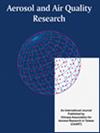贝鲁特港爆炸对空气颗粒物的长期影响?
IF 2.5
4区 环境科学与生态学
Q3 ENVIRONMENTAL SCIENCES
引用次数: 0
摘要
2020年贝鲁特港口爆炸释放了包括硝酸铵在内的大量化学物质,但爆炸对空气质量和公众健康的长期影响尚不清楚。本研究采集了黎巴嫩贝鲁特爆炸后1个月和3个月的颗粒物(pm10)样本。将2020年(爆炸后1个月和3个月)测得的主要阴离子的平均浓度与2009-2015年进行对比,计算差值百分比,并将2020年9月(爆炸后1个月)和11月(爆炸后3个月)的阳离子和阴离子的平均浓度进行对比,发现异常值,从成分浓度上看,对爆炸后PM的影响不显著。也就是说,爆炸直接引起的PM和气体可能会受到快速的大气输送和沉积。因此,研究结果表明迫切需要对土壤和水的化学污染进行调查。长期监测是必要的,以避免可能的颗粒再悬浮造成随后的空气污染。爆炸后持续的拆除和重建可能是贝鲁特港口爆炸的主要长期影响,导致地面pm2.5浓度比推荐浓度(24小时平均值15µg m -3)高出400%。必须采取防护措施,通过控制拆迁施工、交通和柴油发电机释放PM来降低暴露风险。还根据2021年多环芳烃测量结果对贝鲁特的癌症风险进行了估计和讨论本文章由计算机程序翻译,如有差异,请以英文原文为准。
Any Long-term Effect of the Beirut Port Explosion on the Airborne Particulate Matter?
The Beirut port explosion in 2020 released a huge amount of chemicals including ammonium nitrate, however, the long-term effects of the explosion on air quality and public health remain unclear. In this study, particulate matter (PM 10 ) samples were collected in Beirut, Lebanon 1 month and 3 months after the explosion. The average concentrations of main anions measured in 2020 (one and three months after the explosion) were compared with those in 2009–2015 by calculating the percentage of difference, and the average concentrations of cations and anions in September (one month after the explosion) and November (three months after the explosion) 2020 were also compared to identify any abnormal values, indicating insignificant effects on the post-explosion PM in terms of component concentrations. That is, PM and gases directly induced by the explosion might be subject to rapid atmospheric transport and deposition. Hence, the results imply that investigations of the chemical contaminations in soil and water are urgently needed. Long-term monitoring is necessary to avoid subsequent air pollution caused by possible particle resuspension. The continuous demolition and reconstruction after the explosion are possibly the main long-term effect of the Beirut port explosion, causing an elevated concentration of PM 2.5 at ground level 400% higher than the recommended concentrations (15 µ g m –3 for 24-hour mean). Protective measures must be taken to reduce the exposure risks by controlling the PM release from demolition and construction, traffic, and diesel generators. The cancer risk in Beirut based on PAHs measurements in 2021 was also estimated and discussed
求助全文
通过发布文献求助,成功后即可免费获取论文全文。
去求助
来源期刊

Aerosol and Air Quality Research
ENVIRONMENTAL SCIENCES-
CiteScore
8.30
自引率
10.00%
发文量
163
审稿时长
3 months
期刊介绍:
The international journal of Aerosol and Air Quality Research (AAQR) covers all aspects of aerosol science and technology, atmospheric science and air quality related issues. It encompasses a multi-disciplinary field, including:
- Aerosol, air quality, atmospheric chemistry and global change;
- Air toxics (hazardous air pollutants (HAPs), persistent organic pollutants (POPs)) - Sources, control, transport and fate, human exposure;
- Nanoparticle and nanotechnology;
- Sources, combustion, thermal decomposition, emission, properties, behavior, formation, transport, deposition, measurement and analysis;
- Effects on the environments;
- Air quality and human health;
- Bioaerosols;
- Indoor air quality;
- Energy and air pollution;
- Pollution control technologies;
- Invention and improvement of sampling instruments and technologies;
- Optical/radiative properties and remote sensing;
- Carbon dioxide emission, capture, storage and utilization; novel methods for the reduction of carbon dioxide emission;
- Other topics related to aerosol and air quality.
 求助内容:
求助内容: 应助结果提醒方式:
应助结果提醒方式:


